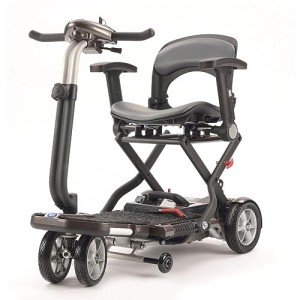Why Mobility Aids Is More Tougher Than You Imagine

Understanding Mobility Aids: Enhancing Independence and Quality of Life
As society continues to age and people significantly seek methods to preserve independence, the demand for mobility aids has actually never ever been more essential. Mobility aids, which encompass a series of devices designed to help individuals with strolling or moving around, play an essential function in promoting mobility, improving safety, and improving total lifestyle. This blog post will explore the various kinds of mobility aids, their advantages, considerations for choice, and answer some frequently asked concerns.
Types of Mobility Aids
Various mobility aids are available, each designed to resolve specific requirements. The following table summarizes some of the most common types of mobility aids and their functions.
| Kind Of Mobility Aid | Description | Best Suited For | Key Features |
|---|---|---|---|
| Walking sticks | A handheld stick offering support and balance. | People who need minimal help. | Light-weight, portable, adjustable height. |
| Walkers | Four-legged frames providing stability. | Those requiring substantial assistance while walking. | Foldable, some with wheels, included safety features. |
| Rollators | Wheeled walkers with a seat for resting. | People needing mobility with the choice to rest. | Brakes, baskets for personal items, adjustable height. |
| Wheelchairs | Chairs with wheels for individuals with minimal mobility. | Those unable to walk or requiring comprehensive assistance. | Handbook or powered choices, personalized seating. |
| Scooters | Motorized devices for larger distances. | People with restricted stamina however needing independence. | Different sizes and styles, often transportable. |
| Crutches | Support devices put under the arms or forearms. | People recovering from lower limb injuries. | Adjustable, lightweight, needs upper body strength. |
| Stairlifts | Mechanical devices for moving between floorings. | Users dealing with difficulties in multi-level homes. | Customizable for different staircases, automated. |
Advantages of Mobility Aids
Mobility aids supply a variety of advantages that can substantially improve the lives of individuals dealing with mobility difficulties. Some notable benefits include:
- Increased Independence: Mobility aids empower individuals to move freely without depending on others for assistance, therefore improving their confidence and self-esteem.
- Boosted Safety: Using mobility aids can lower the threat of falls and injuries, especially for older adults or those with balance concerns.
- Improved Quality of Life: By assisting in mobility, individuals can participate in social activities, participate in events, and take pleasure in life more fully, adding to better psychological and mental health.
- Rehab Support: After surgery or injury, mobility aids provide essential support and stability, aiding in recovery and rehabilitation processes.
- Ease of access: Many mobility aids are created to be utilized both indoors and outdoors, ensuring that individuals can navigate different environments with ease.
Aspects to Consider When Choosing Mobility Aids
Picking the suitable mobility help requires mindful factor to consider of several factors, including:
| Factor | Considerations |
|---|---|
| User's Needs | Examine the level of mobility required; think about whether the user needs temporary or long-lasting assistance. |
| Physical Limitations | Assess the user's strength, balance, and coordination to figure out the very best kind of help. |
| Setting | Consider the primary environments where the aid will be used, such as home, outdoors, or particular terrains. |
| Weight and Portability | Guarantee that the selected device is manageable relating to mobility and storage, specifically for outdoor use. |
| Spending plan | Mobility aids can be found in a series of prices; think about insurance coverage and available funding choices. |
| Adjustability | Pick aids that can be changed for height and comfort to accommodate development or changing requirements. |
Regularly Asked Questions About Mobility Aids
1. How do I know if I need a mobility help?
Many factors can signal the requirement for a mobility help, such as trouble walking or balancing, fatigue while standing, or a current surgical treatment impacting mobility. Consulting with a healthcare expert can provide guidance tailored to specific needs.
2. What kinds of mobility aids are covered by insurance?
Protection differs between insurance providers, but most provide options for long lasting medical devices, which usually consists of wheelchairs, walkers, and some kinds of walking canes. Consult foldable travel scooters for specific protection details.
3. Can mobility aids be used outdoors?
Yes, lots of contemporary mobility aids are developed for outdoor use. Rollators, scooters, and some walkers are equipped with functions for stability and ease of use on numerous terrain.
4. How do I maintain my mobility help?
Regular maintenance includes inspecting for any wear and tear, ensuring that parts such as wheels, brakes, and frames are operating properly, and cleaning the devices as required. Following the manufacturer's standards is important for security.
5. Is there a risk of becoming reliant on mobility aids?
While some users might become reliant on mobility aids, they are designed to promote self-reliance and mobility. Gradually using a mobility aid can boost confidence and help retain physical strength and coordination.
Mobility aids are invaluable tools that empower individuals to conquer physical obstacles, promoting independence and improving quality of life. By understanding the numerous kinds of mobility aids readily available, their advantages, and essential elements for consideration, households and caregivers can make informed choices that best meet the requirements of their loved ones. With the right support, those with mobility challenges can lead satisfying and active lives, complimentary to check out the world around them.

